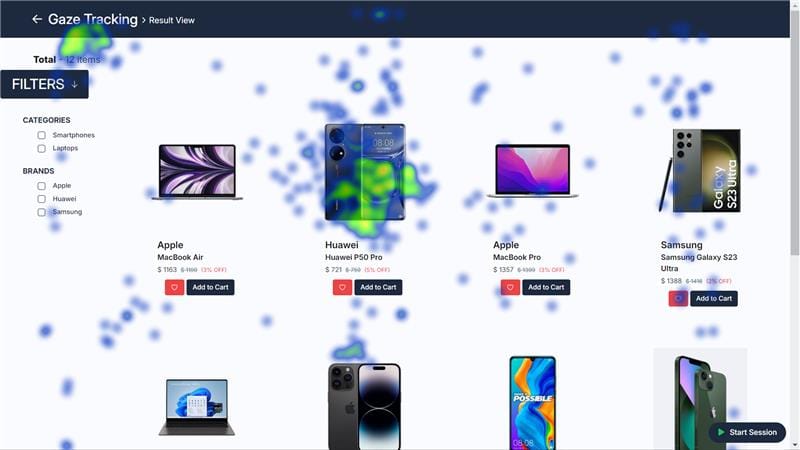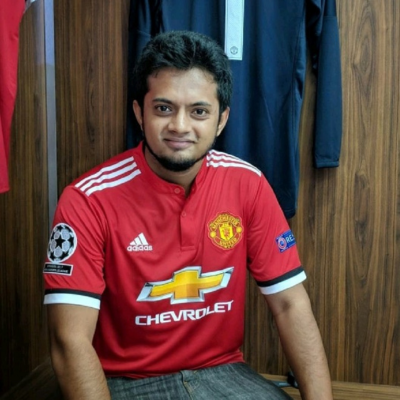Democratising Neuropsychological Diagnosis with Gaze Tracking: A Collaborative Breakthrough
Discover how Codemonk's gaze tracking technology is revolutionizing neuropsychological diagnosis by enabling early detection of cognitive disorders like Alzheimer's through cost-effective, software-driven solutions on smartphones.

In today’s fast-paced world, advancements in neuropsychology and assistive medical technology are essential to addressing complex psychological disorders. For instance, how a normal (unaffected) person would respond to cognitive tests and how an affected person responds to the same tests is well differentiated within the medical community, enabling medical professionals to diagnose ailments such as Dementia, Alzheimer's, Pareidolia or more effectively. That said, carrying out such diagnosis has been challenging for a multitude of reasons. Medical professionals need to spend a bare minimum of 45 mins to an hour conducting cognitive tests to arrive substantiated diagnosis. Secondly, these cognitive tests are technology intensive - requiring expensive tools for an efficient diagnosis.
These problems were apparent to a veteran in the medical sciences at Osaka University, Japan (remains anonymous at this point) who had hypothesised and devised an alternative with which medical professionals could easily diagnose such neuropsychological disorders by simply observing the movement of the eyeballs of a person. When subjected to something as simple as a smartphone screen displaying rudimentary information, how a normal person would look at the screen and how an affected person would offers invaluable insights into the diagnosis of neuropsychological disorders; the movement of the eye balls when looking at the screen, between an affected person and an unaffected person, greatly differs in patterns, as observed by the front facing camera of the smartphone that is turned on during this procedure. Dr. Gajanan, another exceptional researcher at Osaka University, who worked alongside the above mentioned genius veteran, wanted to bring this hypothesis to the rest of the world. Dr. Gajanan, who had, at this point, explored numerous technological partners to bring this solution to fruition, ultimately met with engineers at Codemonk that braved up to the challenge of materialising this hypothesis.
In a recent conversation with engineers working on gaze-tracking technology at Codemonk, an insightful narrative unfolded about how this collaboration with Osaka University is pushing the boundaries of how neuropsychological disorders, such as Alzheimer's, can be diagnosed more effectively.
The Beginning: The Need for Accurate Gaze-Tracking Technology
The collaboration was initially seeded through conversations with Dr. Gajanan, an expert in neuropsychology, after experiencing subpar partnerships in previous attempts to develop gaze-tracking technology. He sought a solution that was scalable and cost-effective with a focus on gaze tracking as a diagnostic tool for neuropsychological conditions. And, he had a simple goal in mind: improving the accuracy of this technology without relying on expensive hardware.
Team Codemonk stepped in, building a gaze-tracking solution that didn’t require specialized hardware but instead focused on a software-driven approach. This approach was both scalable and cost-effective—key for broader adoption in diverse settings, such as rural healthcare or clinics with limited budgets.
The Core Technology: Precision and Scalability
From the outset, the team was tasked with overcoming several technical challenges. One of the primary objectives was ensuring that the error margin in tracking eye movements remained under 1.5 cm—no easy feat when considering the vast differences in human eye shapes, sizes, and colors. Unlike hardware-heavy solutions previously known to the medical sciences, which require external IR cameras and other costly peripherals, Codemonk focused on a software-centric method.
In the below video, the gaze of a person looking at the objects placed on the table (shown on a screen, of course) is tracked using the green dot hovering over the screen.
This innovation allowed for a broader application across multiple industries, but its most compelling use case emerged in healthcare, where it could serve as a powerful tool for diagnosing cognitive decline.
From Paper to Digital: Streamlining Medical Testing
Traditionally, pen-and-paper neuropsychological tests are time-consuming, often taking 40 minutes to an hour for patients to complete. Codemonk aimed to digitize this process, reducing test times to just 15-20 minutes, all while maintaining or surpassing the accuracy of the traditional methods. In fact, their digital solution—tested across multiple hospitals in Osaka—proved more accurate than the pen-and-paper tests, reducing both the time and cost associated with neuropsychological diagnostics.
A Breakthrough in Alzheimer’s Diagnosis
A significant aspect of the collaboration’s gaze-tracking technology lies in its application to diagnosing Alzheimer’s disease and similar cognitive disorders. Patients are shown a series of images, some containing hidden patterns or faces. Healthy individuals typically only recognize faces where they are present, while those with cognitive impairments often see patterns where none exist—a phenomenon known as pareidolia. This insight has proven to be a key differentiator in identifying early signs of neuropsychological decline.
Here, we see a live demonstration of the accuracy showcased by the solution as the observer looks at different elements shown on screen, with accuracy (1mm) that surpassed the like of NVIDIA in Gaze Tracking.
The below image shows the heat map of the gaze of the person looking at the screen.

By integrating gaze-tracking data with other patient inputs—such as speech patterns, short-term memory recall, and demographic information—Codemonk was able to create a machine-learning algorithm that predicts a patient’s likelihood of developing a cognitive disorder. This automated classifier takes into account multiple factors, providing doctors with a comprehensive tool to make more informed decisions.
Expanding Horizons: Clinical Trials and Global Reach
Following the success of the initial phase of trials in Osaka, the collaboration expanded to involve more participants, including patients with diagnosed conditions like Alzheimer's and a control group of healthy individuals. The results of these trials, which involved over 100 participants, were promising. The technology’s accuracy in predicting neuropsychological conditions surpassed traditional methods, opening the door for further clinical trials across Japan and India.
One of the key takeaways from this collaboration is the system’s ability to scale across different demographics and regions. The software is designed to adapt to the specific needs of different populations, such as Japanese individuals, whose smaller eye shapes required specific fine-tuning to ensure the accuracy of the gaze-tracking data.
As the project moves into its next phase, the team is preparing for broader clinical trials in India, where the solution will be adapted to support multiple languages, including Kannada, Marathi, and Hindi. This is a crucial step toward making the solution accessible and effective in diverse settings, further enhancing its scalability and potential impact.
Interestingly enough, the technology also attracted the interest of the aviation industry, where training pilots and understanding their attentiveness during flight had to be improvised. A proof of concept for the same is showcased below. Again, the green dot hovering over the screen is indicative of where the pilot is looking during flight. The pilot is using a simulator for their training and his attention on screen is showcased via the tracker.
Gaze Tracking: A Game-Changer in Healthcare
What makes this collaboration so significant is not just the technological breakthrough but the way it democratizes access to high-quality diagnostics. Traditionally, patients would have to visit a clinic and undergo extensive tests under the supervision of a medical professional. With this new smartphone-based solution, anyone can take the test from the comfort of their home, making it easier for early diagnosis and intervention.
This innovation doesn’t just reduce time and costs; it makes cutting-edge diagnostic tools available to people who might otherwise not have access, thus helping to bridge gaps in healthcare accessibility.
Looking Forward
As this technology continues to evolve, its implications stretch far beyond just gaze-tracking for neuropsychological disorders. The fundamental advancements made here can be applied to various industries, from e-commerce to human-computer interaction, wherever eye movement analysis plays a role.
However, the most immediate and impactful use case remains healthcare. With plans to further refine the solution through clinical trials in India and Japan, the future of neuropsychological diagnostics looks promising. By integrating cutting-edge machine learning with real-world medical applications, the partnership between team Codemnk and Osaka University represents a powerful stride toward improving global healthcare outcomes.

